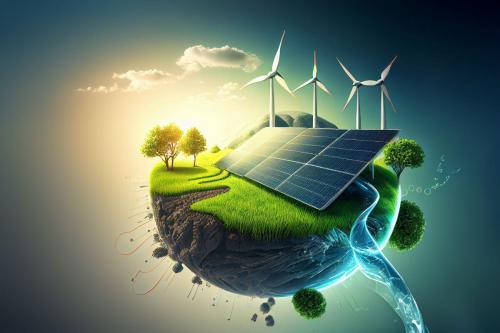What are the key components of a sustainable energy solution?

In the ever-evolving landscape of energy, the pursuit of sustainable solutions has become paramount. As the world grapples with environmental challenges and seeks to reduce its carbon footprint, understanding the key components of a sustainable energy solution becomes crucial.
Understanding Sustainable Energy
Sustainable energy refers to the production and use of energy in ways that meet the current needs without compromising the ability of future generations to meet their needs. This involves adopting practices that are environmentally friendly, economically viable, and socially responsible.
Key Components of a Sustainable Energy Solution
Renewable Energy Sources
At the forefront of sustainable energy are renewable sources such as solar, wind, hydro, and geothermal power. Harnessing energy from these sources reduces reliance on finite fossil fuels, decreasing greenhouse gas emissions and mitigating climate change.
Energy Storage Technologies
Efficient storage of energy is a cornerstone of sustainability. Advancements in battery technologies, pumped hydro storage, and other innovative storage solutions ensure a steady and reliable power supply, even when renewable sources are intermittent.
Energy Efficiency Measures
Implementing energy-efficient practices in industries, buildings, and transportation is instrumental in sustainable energy solutions. This includes using energy-efficient appliances, improving insulation, and adopting energy-saving technologies.
Smart Grids and Infrastructure
Smart grids integrate advanced communication and control technologies into the traditional energy infrastructure. These grids enhance efficiency, enable real-time monitoring, and facilitate the integration of renewable energy sources into the power grid.
Policy and Regulations
Government policies and regulations play a pivotal role in shaping the energy landscape. Incentives for renewable energy adoption, emission reduction targets, and regulations promoting sustainable practices contribute to the success of sustainable energy solutions.
Advantages of Sustainable Energy Solutions
Environmental Benefits
One of the primary advantages of sustainable energy solutions is their positive impact on the environment. Reduced air and water pollution, as well as a lower carbon footprint, contribute to a healthier planet.
Economic Impact
Investing in sustainable energy creates jobs and stimulates economic growth. The renewable energy sector has shown remarkable potential for job creation, providing opportunities for employment across various skill levels.
Energy Security
Diversifying the energy mix with sustainable sources enhances energy security by reducing dependence on fossil fuel imports. This also mitigates the geopolitical risks associated with traditional energy sources.
Challenges in Implementing Sustainable Energy Solutions
Initial Costs
While the long-term benefits are substantial, the initial costs of transitioning to sustainable energy can be a barrier for many. Investments in renewable technologies and infrastructure may require substantial capital.
Technological Challenges
Advancements in sustainable energy technologies are essential, but they come with their set of challenges. Overcoming technological barriers and improving the efficiency of existing solutions is an ongoing process.
Resistance to Change
Resistance to change, both at the individual and institutional levels, can impede the widespread adoption of sustainable energy solutions. Education and awareness campaigns are crucial in overcoming this resistance.
Success Stories and Case Studies
Highlighting successful implementations of sustainable energy solutions globally can inspire and educate. Case studies of cities or countries effectively transitioning to renewable energy can serve as models for others.
The Future of Sustainable Energy
As technology continues to evolve, the future of sustainable energy looks promising. Innovations in materials, energy storage, and grid management are expected to drive further advancements in the field.
Role of Innovation and Research
Ongoing research and innovation play a critical role in the sustainability journey. Investments in research and development lead to breakthroughs in technology, making sustainable solutions more accessible and efficient.
Conclusion
In conclusion, the key components of a sustainable energy solution encompass a holistic approach, integrating renewable sources, advanced technologies, and supportive policies. Embracing these components not only addresses environmental concerns but also brings about economic benefits and energy security.
FAQs
Are sustainable energy solutions cost-effective in the long run? Sustainable energy solutions may have higher initial costs, but the long-term economic and environmental benefits often outweigh the upfront expenses.
How can individuals contribute to sustainable energy? Individuals can contribute by adopting energy-efficient practices, supporting renewable energy initiatives, and advocating for sustainable policies.
What challenges do countries face in transitioning to sustainable energy? Challenges include initial investment costs, technological barriers, and resistance to change at various levels of society.
Can sustainable energy solutions meet the rising global energy demand? With continuous advancements in technology and infrastructure, sustainable energy solutions have the potential to meet and exceed global energy demands.
What role do governments play in promoting sustainable energy? Governments play a crucial role in shaping the energy landscape through policies, incentives, and regulations that encourage the adoption of sustainable practices.
Post Your Ad Here
Comments